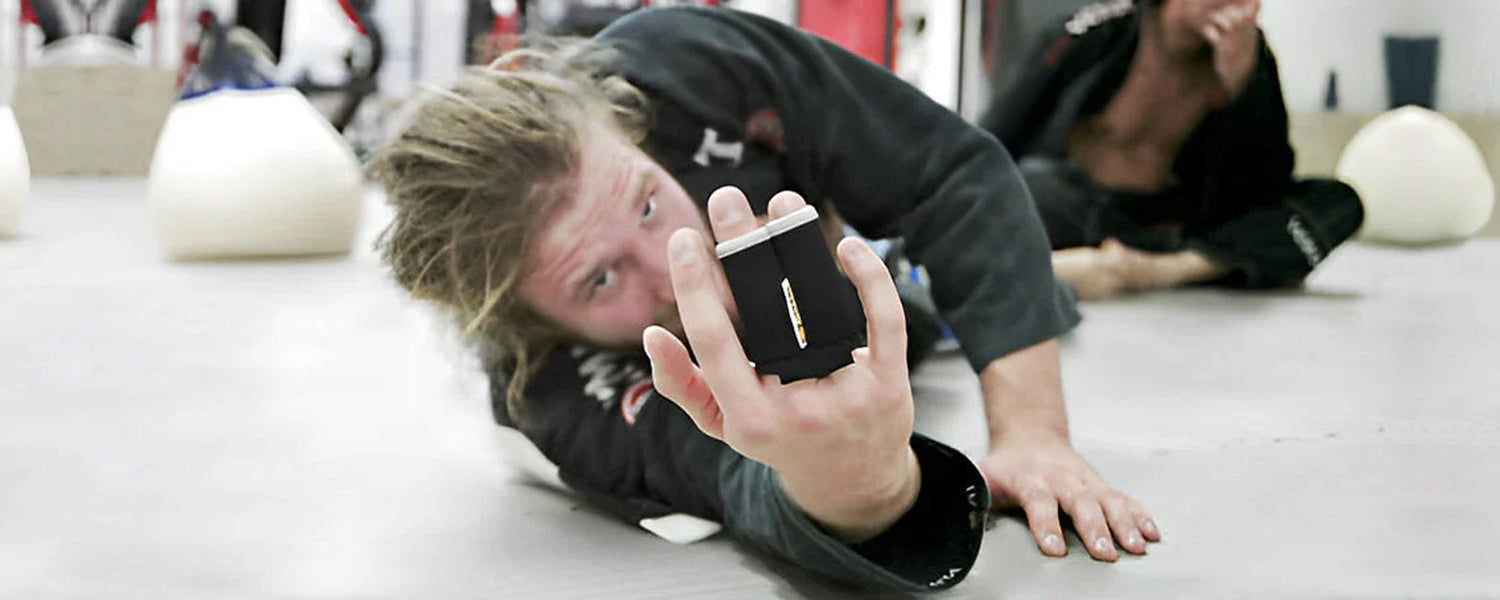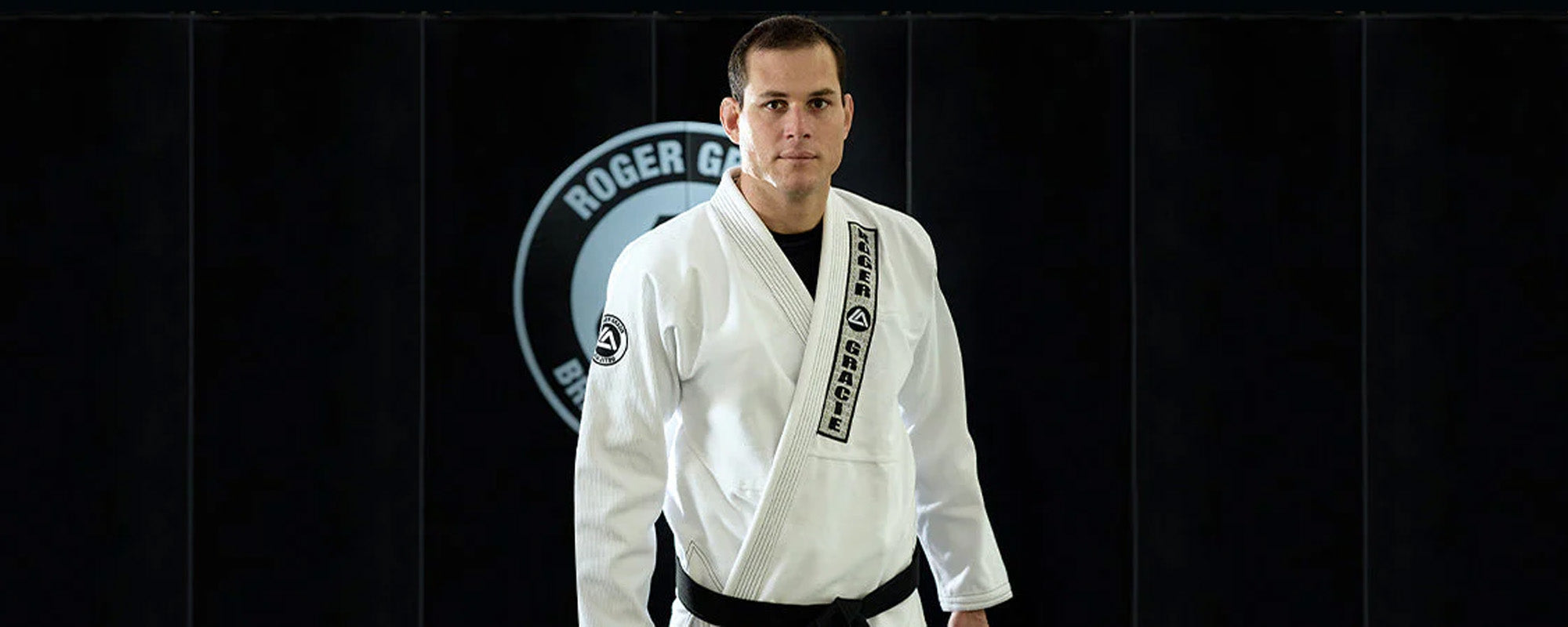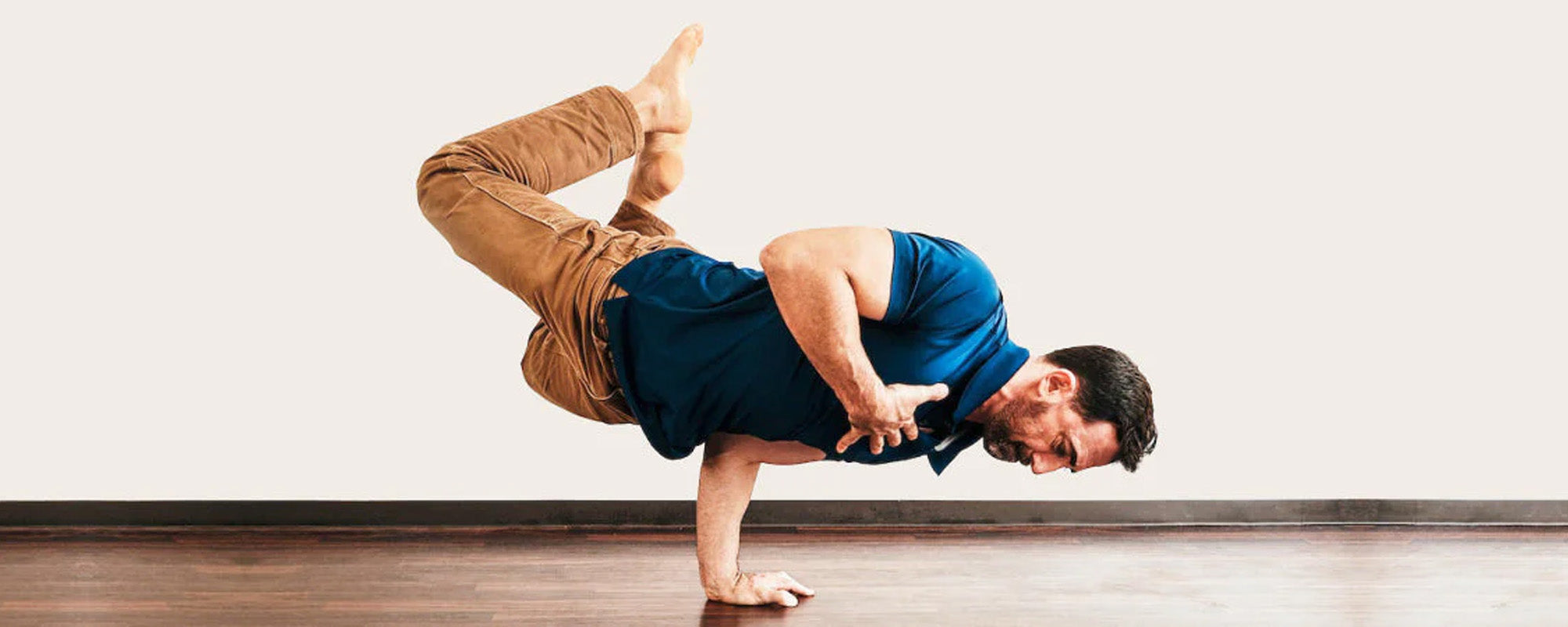Table of content
The fingers do a lot of work for us. However, did you ever know the science behind the working of your fingers? What elements play their role to move our fingers? We will describe the chemistry behind the movement of your finger and then move toward the causes of finger injuries in BJJ. These steps will surely help you to provide answers to all your queries in one plate.
1. Why Fingers Pain During BJJ Training
Every joint in your body contains ligaments and capsules that help in movement, the same goes with fingers. Many joints work together to ensure the mobility of fingers. A synovial membrane is present inside the capsule that secretes synovial fluid. Synovial fluid keeps your joint's movement smooth and makes them pain-free by providing lubrication and protection. However, a decrease in the production of synovial fluid can cause pain in your fingers.
BJJ is a healthy hobby that keeps your body in shape. However, The grappling techniques can exert a toll on the joints of grapplers including elbows, knees, and fingers. BJJ moves and techniques involve clasping, holding, and gripping. So, the chances of finger injuries are high in Jiu-Jitsu. Occasional soreness in strenuous training is bearable but it can become a severe problem if not addressed properly. Finger injuries in BJJ affect the synovial fluid that helps in the lubrication of the finger joint. This may become the cause of finger arthritis which leads to severe pain in the fingers. So, it’s necessary to take some preventive measures before going on the mat.
In this article, we will provide a complete guide for Jiu-Jitsu lovers to prevent and treat finger injuries during BJJ practice.
2. Pain and BJJ
Brazilian Jiu-Jitsu training, especially when performed in the BJJ Gi, becomes painful for the fingers. As small joint manipulation is prohibited in Jiu-Jitsu, hence submission techniques and controlling grips often cause pain, swelling, and tweaking from their normal place. However, in Jiu-Jitsu, fingers can occasionally become trapped in Gi and twist incorrectly with pressure. The fingers also have to withstand collisions and tight gripping that become the cause of injuries in BJJ. Let's go over the most common BJJ finger injuries and their causes so that we can better understand and prevent them.

3. Causes of Finger Pain in BJJ
Although it’s not easy to break the finger bones because they are more reflexive and able to bear pressure, load, and provide a good grip. However, sparing and rolling in BJJ can have a bad effect on the finger that causes severe pain. Some are minor injuries that can be healed with treatment at home, while some injuries are severe that can even cause arthritis and long-term effects.
The most common causes of finger pain or injuries on the mat are:
- Twist of a finger in the opposite direction
- Tangled the finger in the Gi of an opponent during a fight
- Stocking the finger beneath the opponent’s body
These reasons can cause finger dislocation and other injuries in Jiu-Jitsu. Finger injuries result in severe pain if not treated properly. These are three levels of finger injury:
- Minor Dislocation
- Complete Dislocation
- Ruptured Ligament
Slightly dislocated fingers can be treated at home by rubbing ice on the affected finger joints. This practice will help to reduce pain and swelling and control internal bleeding. Complete dislocation requires proper surgery while ruptured ligaments can be treated with physical therapy and anti-inflammatory drugs.
4. Types of Finger Injuries Happen in BJJ and their Treatment
Jiu-Jitsu practitioners can experience finger injuries. We will discuss Jiu-Jitsu finger injuries and their treatment here. Some major types of finger injuries in Jiu-Jitsu are
4.1. Fracture
A fracture in the finger is commonly known as a broken finger. Although all parts of the hand and fingers can be affected during BJJ, phalanges are more susceptible to finger damage. The main reason to get fractured on the mat is the twisted fingers due to drills and sparing.

Treatment
Fractures can be diagnosed by X-ray of the affected area. Fracture fingers can be treated by wearing a splint that completely immobilizes the entire finger and keeping the bone tightly in one position. After initial healing, it's necessary to tape the affected finger till the proper recovery.
4.2. Jersey Finger
The ring finger is the weakest finger and most susceptible to a jersey finger injury. That’s why 75% of the jersey finger is associated with the ring finger. In this, flexor tendons are ruptured which are responsible for the movements of fingertips. The main symptoms of the jersey finger are also linked with the fingertips. It hinders the movement of the fingertip and causes swelling on it. It also causes severe pain and inflammation in the affected area. However, finger joints are not affected in jersey finger injury. BJJ practitioners may encounter this finger injury while grabbing each other with full force.
Treatment
Jersey finger injury diagnoses by X-Ray of the affected area to confirm the severity of the damage. This condition can be treated with surgery. If the jersey finger is left untreated it has a prominent effect on hand movement and the gripping strength of hands.
4.3. Collateral Ligament Injuries
In collateral injuries usually, PIP Joints (Proximal Interphalangeal) are affected. BJJ practitioners face collateral ligament injuries after having high pressure or force on the interphalangeal joints. The intense force on the PIP joints on the mat can tear the collateral ligament.
Treatment
It can be treated with splinting and taping for 3-4 weeks. In addition, anti-inflammatory drugs are used in case of severe pain. BJJ practitioners should take some days off from the mat during collateral injury.
4.4. Boutonniere Finger
Boutonniere's Finger injuries were caused by heavy force on the PIP joints during BJJ practice. In this type of injury, the central slip of the extensor tendons is affected. Healthcare evaluates it by holding the PIP joint in 15 to 30 degrees of flexion. If the PIP joints of grapplers are injured then they are unable to straighten their fingers.
Treatment
Splinting of PIP joints for 6 weeks helps in the treatment of Boutonniere Finger. Delays in proper treatment can be severe or long-term damage.
4.5. Dislocation
Dislocation in the finger occurs when the bone is pulled out of its socket. When bone misplaces from its position, it does not allow the joint to perform its normal functions. Bones lost their alignments during dislocation due to the intense pressure during grappling, rolling, and fighting and because of the natural wear and tear of ligaments. It mostly occurs in BJJ due to the bending of fingers during drills or sparring on the mat.
Treatment
Dislocated fingers can be treated by physical therapy. However, after getting injured on the mat, rub the ice immediately to reduce the swelling and control the internal bleeding.
4.6. Jammed Finger (Sprain and Hyperextension)
A jammed finger or sprain is a painful joint inflammation that can happen on the mat. It’s similar to dislocation to some extent but has less severity. It may happen when the finger bends on the mat. Ligaments are stretched and pulled apart in this condition. Ligaments in the finger are the tissues that connect bones with joints and any deformity in it causes severe pain in the finger. This type of injury usually occurs when the finger of a BJJ fighter is stuck in the opponent’s Gi.
Treatment
Ice can aid the fighters to relieve the pain at home. Splinting and buddy taping are recommended treatments for this type of injury. However, grapplers must take medical assistance for proper treatment.
5. Prevention from BJJ Finger Injuries
Finger injuries are not inevitable in Jiu-Jitsu. You have to take precautionary measures while following the proper guidelines of the medical expert and have to take the preventive measures. Timely precaution can cut the pain of finger injuries.
5.1. Warm up Your Finger
Because Jiu-Jitsu practice involves whole-body movement, you should normally try to warm up before starting BJJ training. It will make your joints and fingers feel more flexible and ready to grip.
5.2. Taping Your Finger
Are your finger ligaments hurt on the mat? Spend some money on tape to prevent yourself from painful finger injuries. BJJ practitioners should use tape to cover pre-injured fingers.
To provide stability and additional support for joints, rigid sports strapping tape is widely utilized in sports. Taping is quite good at absorbing power that passes through the fingers and protecting your vital ligaments.
Although taping is required for all BJJ classes, notably for spider guard players. Wrap 12.5mm tape over each finger's final joint, overlapping 2.5 to 3 times. However, don't tape too tightly or directly over the same layer of tape, otherwise, your fingertips will become blue. Wrapping tightly can also cause severe reactions and redness at the tips of your fingers.
5.3. Strength Training
Through Jiu-Jitsu training, your fingers will gradually become stronger, but you can also sustain injuries that might result in weakening your joints. However, there are techniques to bolster the finger and decrease the dangers of a setback.
Consider rock climbing, the activity that can provide you with the greatest amount of finger dexterity. Fingers are the main tool in rock climbing. So, they need to be fit and robust. A simple approach to efficiently strengthen the fingers is to imitate rock climbers by climbing, hanging from small holds, or climbing high cliffs with little holds. Obviously, you don't have to be an expert rock climber to have strong fingers, and you should start slowly.
Similarly, BJJ practitioners need some strength training before going on the mat that helps them to sustain the high pressure.
5.4. No-Gi
No-Gi techniques are easy on the hands and fingers. It is one of the best methods to reduce hand injuries.
If you want to develop non-grip-reliant moves that will benefit you on the mat, think about practicing without a Gi. You'll not only protect yourself from finger injuries but also become a driving force in Jiu-Jitsu if you master over hooks and under hooks in No-Gi.
6. Treatment for BJJ Finger Can be Done at Home
Can you treat your finger pain at home? Some popular treatments can reduce your pain. The common home treatments for BJJ injuries are:
6.1. Proper Rest
Muscles and tissues of your body rejuvenate while you are sleeping. If you are not getting proper sleep, then it becomes harder for your tissues and muscles to repair. So, for getting a proper recovery from a finger injury, you have to adopt a proper rest schedule. That will ensure the fast recovery and health of your finger.
6.2. From Ice
Ice slows down the swelling of soft tissue in your finger and reduces inflammation. BJJ practitioners can reduce finger pain by rubbing ice on the injured area. This will soothe your pain and prevent further damage by cooling the tissues.
6.3. Stretching Exercise
Stretching exercises make the fingers more flexible and mobile. When you stretch your affected area, it will increase the blood flow and in turn stimulate the healing process of damaged tissues. Grapplers can increase the recovery rate of finger injuries by stretching exercises at home.
6.4. Warm Bath Treatment
Warm bath treatment helps to relax your fingers, increase the blood flow and reduce the stiffness in injured fingers. Warm water can help in relieving joint pain. Warm water also helps you to reduce the discomfort and stress of your finger joints. Bathing your stiff fingers in warm water is one of the finest techniques to relieve finger pain in BJJ. This therapy not only effectively treats finger injuries but also lessens discomfort.
7. FAQs
7.1. How Do You Know If a Finger Injury is Serious?
Continuous pain in the finger is a sign of something serious. If serious attention is not provided then pain continues and limits the use of the fingers.
7.2. Should I Tape My Fingers for BJJ?
Yes, for new BJJ practitioners, it's recommended to tape their fingers. It takes time for BJJ grapplers to master grappling techniques.
7.3. How Long Does a Damaged Finger Take to Heal?
The rehabilitation period after finger injury may vary from 6 to 8 weeks depending on the injury. However, it may take 3 to 4 months in some cases.
8. Final Thought
Unfortunately, many people who practice Brazilian Jiu-Jitsu endure finger sprains and other injuries often. However, many finger sprains can be avoided by taking precautionary and preventive measures. Just don't hang on in one position, release your grips if you start to feel tense.
If you have serious and persistent pain in your finger joints, you should think about whether you want to learn No-Gi or Gi BJJ, as No-Gi is considerably easier on the fingers.
Photo Credit: @bjj-world













Leave a comment
This site is protected by hCaptcha and the hCaptcha Privacy Policy and Terms of Service apply.